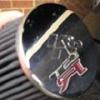Ceramic Stockies
Announcements
-
Similar Content
-
Latest Posts
-
Yep, it was only an option on the Q50 Hybrid. Same in Japan as far as I know. And doesn't use a centre diff like the Suby's do, so not the same as the WRX. But it also isn't a reactive AWD like other Nissan AWD vehicles are, eg. Murano/Xtrail/etc.
-
Are you thinking of Bens R32? I don't remember if his went through the bonnet itself, but it went through the chassis rail. Brad (RISKIN) bought it, and turned it into a track car. It's funny how anti people are of Jim Berry now. I remember when I pulled mine out (during an engine change) and inspected it and found it cracking badly. At that point in time so many people were even on SAU, were so pro Jim Berry, and that was after Bens GTR exploded his quite publically.
-
That's one of the reasons I got that breed, they look weird, the other reasons are they small, they are very vocal, and run around like they are on crack, I didn't want a breed that just sits around, these two are like kids on red cordial My daughter has one, and it's a laugh riot, constantly doing Parkour around the house, sits on her shoulder, plays catch, and constantly runs around the house taking turns chasing the dog around, her Bermese though, just lays around with constant bitch face, and just looks on in utter disgust at the cat and dog playing together
-
By Murray_Calavera · Posted
I'm getting PTSD flashbacks seeing that name again. With my turbo swift, I got 1,500km of street use on a Jim Berry clutch before it exploded and took out my input shaft with it.
-





Recommended Posts
Create an account or sign in to comment
You need to be a member in order to leave a comment
Create an account
Sign up for a new account in our community. It's easy!
Register a new accountSign in
Already have an account? Sign in here.
Sign In Now